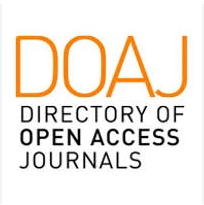A nagygépes vasúti alépítményjavítási technológia bevezetése a magyar vasútépítésben
Absztrakt
A magyar vasúti hálózat európai törzshálózatba (TEN-T) tartozó elemeinek teljes körű felújítása, modernizációja fokozott ütemben kezdődött meg a 2009-2016 közötti KÖZOP finanszírozási program keretében. A korszerű technológiák bevezetése kézenfekvő megoldás volt a vasúti alépítmény rehabilitációjának elvégzéséhez is tekintve a program során munkáltatás alá vett jelentős vágányhosszakat. A Magyarországon új technológia honosításához azonban a tervezési, műszaki ellenőrzési és kivitelezési folyamatokat szabályozó előírásrendszereket is meg kellett újítani. A kivitelezési munkák megkezdése előtt a vasúti nagygépes alépítményjavítási technológiához nélkülözhetetlen törtszemcsés kiegészítő réteg anyagának hazai körülmények között elérhető kőbányákból származó keverékét is ki kellett kísérletezni. A honosítási folyamat során a tervezési és műszaki ellenőrzési metódusok eleinte párhuzamosan folytak a korábban alkalmazott eljárásokkal míg az egyenértékűség igazolásra került. Laboratóriumi tesztek és próbaszakaszok építésével történt a kőanyag keverékterv és a technológia véglegesítése. Az alkalmazott új építési módszer a magas műszaki színvonal és a konvencionális technológiához képest igen gyors kivitelezési idő miatt jelentős vágányzári idő csökkenést eredményezett és több fontos környezetvédelmi szempontból is előnyös folyamat alkalmazását is lehetővé tette. A gépláncok a teljes zúzottkő recycling technológiával a be és kiszállítandó kőanyagok mennyiségét csökkentették, mint az alépítményi kiegészítőréteg, mint az ágyazati kőanyag tekintetében. A korszerű vasúti nagygépes alépítményjavítási technológia alkalmazásának köszönhetően az elért magas műszaki színvonal mellett az átépítési munkák CO2 kibocsátása és ezzel párhuzamosan a vasútvonalak ökológiai lábnyoma is csökkent.
Hivatkozások
Chan, H.-Y., Xu, Y., Wang, Z., & Chen, A. (2024). The deeper and wider social impacts of transportation infrastructure: From travel experience to sense of place and academic performance. Transport Policy, 158, 51–63. https://doi.org/10.1016/j.tranpol.2024.09.008
Chen, Y., Zhao, C., Chen, S., Chen, W., Wan, K., & Wei, J. (2023). Riding the Green Rails: Exploring the nexus between high-speed trains, Green Innovation, and carbon emissions. Energy, 282, 128955. https://doi.org/10.1016/j.energy.2023.128955
Erdei, A. (2020). Az Elektronikus Jegyértékesítés Regionális Kihívásai a magyar Vasútnál. Multidiszciplináris Kihívások, Sokszínű Válaszok, (2), 23–42. https://doi.org/10.33565/mksv.2020.02.02
Ficzere Péter (2024). Vasúti közlekedés során keletkező zajok okainak és hatásainak elemzése, International Journal of Engineering and Management Sciences, 9(1), 116–130. https://doi.org/10.21791/ijems.2024.009
Font, A., Hedges, M., Han, Y., Lim, S., Bos, B., Tremper, A. H., & Green, D. C. (2024). Air Quality on UK diesel and hybrid trains, Environment International, 187, 108682. https://doi.org/10.1016/j.envint.2024.108682
Grotte, J., Erdeiné Késmárki Gally, S., & Erdei, A. (2021). A Magyar Vasút Személyforgalmi Kihívásai a Változó Európai világban. Európai Tükör, 24(3), 77–101. https://doi.org/10.32559/et.2021.3.4
Han, I., Samarneh, L., Stock, T. H., & Symanski, E. (2018). Impact of transient truck and train traffic on ambient air and noise levels in underserved communities. Transportation Research Part D: Transport and Environment, 63, 706–717. https://doi.org/10.1016/j.trd.2018.07.010Horvát Ferenc & Horváth Róbert (2016). Design of railway substructure works performed by formation rahabilitation machines and experiences of the executation in Hungary. In STRAHOS 2016 : zborník prednášok 17. seminára traťového hospodárstva. pp. 53–60.
Horváth Róbert (2014): Vasúti pályák rechabilitációjának műszaki, környezetvédelmi és minőségbiztosítási szempontja Budapesti és Pest Megyei Mérnöki Kamara, Közlekedési szakterület, Vasúti szakmai továbbképzés Budapest 2014.
Lalive, R., Luechinger, S., & Schmutzler, A. (2018). Does expanding regional train service reduce air pollution? Journal of Environmental Economics and Management, 92, 744–764. https://doi.org/10.1016/j.jeem.2017.09.003
Lichtberger B. (2022). Das Große Handbuch der Gleisinstandhaltung mit Neubau und Umbau Band 1.. Verlag GmbH. Hamburg
Liu, Z., Diao, Z., & Lu, Y. (2024). Can the opening of high-speed rail boost the reduction of air pollution and carbon emissions? quasi-experimental evidence from China. Socio-Economic Planning Sciences, 92, 101799. https://doi.org/10.1016/j.seps.2023.101799
Major Zoltán, Horváth Róbert, Szennay Áron, & Szigeti Cecília. (2023a). EXAMINATION AND OPTIMIZATION OF THE ECOLOGICAL FOOTPRINT OF EMBEDDED RAIL STRUCTURES In Conference Proceedings of the 7th FEB International Scientific Conference: Strengthening Resilience by Sustainable Economy and Business - Towards theSDGs (pp. 19-27). http://doi.org/10.18690/um.epf.3.2023.5
Major Zoltán, Horváth Róbert., Szennay Áron., & Szigeti Cecília. (2023b). Ecological Footprint Analysis of Tramway Track Structures. CHEMICAL ENGINEERING TRANSACTIONS, 107(Online), 283-288. http://doi.org/10.3303/CET23107048
MÁV Zrt. D 11. számú Utasítás VASÚTI ALÉPÍTMÉNY TERVEZÉSE, ÉPÍTÉSE,KARBANTARTÁSA ÉS FELÚJÍTÁS I. kötet
Priyan, S., Guo, Y., McNabola, A., Broderick, B., Caulfield, B., O’Mahony, M., & Gallagher, J. (2024). Detecting and quantifying PM2.5 and NO2 contributions from train and road traffic in the vicinity of a major railway terminal in Dublin, Ireland, Environmental Pollution, 361, 124903. https://doi.org/10.1016/j.envpol.2024.124903
Stojić, N., Štrbac, S., Ćurčić, L., Pucarević, M., Prokić, D., Stepanov, J., & Stojić, G. (2023). Exploring the impact of transportation on Heavy Metal Pollution: A Comparative Study of trains and Cars. Transportation Research Part D: Transport and Environment, 125, 103966. https://doi.org/10.1016/j.trd.2023.103966
Vaccaro, R., Maino, F., Zubaryeva, A., & Sparber, W. (2024), The environmental impact in terms of CO2 of a large-scale train infrastructure considering the electrification of heavy-duty road transport. iScience, 27(10), 110987. https://doi.org/10.1016/j.isci.2024.110987
Yoo, S., Kumagai, J., Hong, S., Kawasaki, K., Zhang, B., & Managi, S. (2023), Economic and air pollution disparities: Insights from transportation infrastructure expansion, Transportation Research Part D: Transport and Environment, 125, 103981. https://doi.org/10.1016/j.trd.2023.103981
2012. évi CLXXXV. Törvény a hulladékról


























